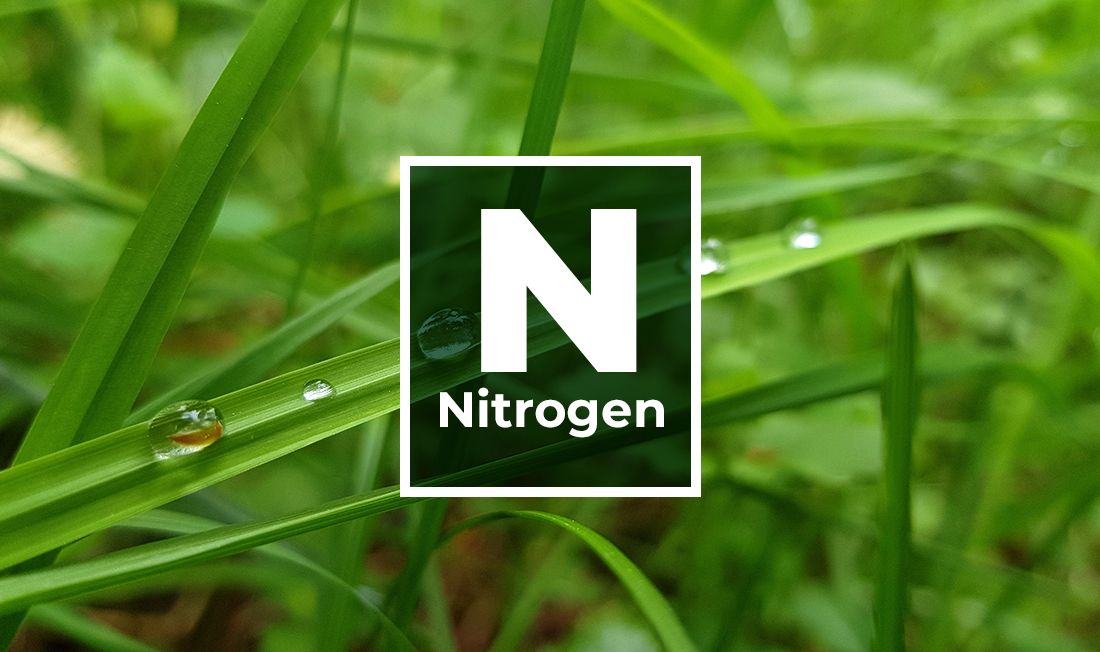Nitrogen is one of the most limiting nutrients for plant growth. Aside from carbon, hydrogen and oxygen, it makes up the greatest percentage of plant leaf tissue, and it’s a primary component of amino acids and chlorophyll. Unfortunately, it’s also the most complex nutrient to manage in a soil fertility program. Efficacy and environmental fate of nitrogen applications vary based on their timing, form, and method of application. When applying fertilizers, of course, the goal is to maximize our applications so that all of the nutrients are taken up by the plants to which they are applied, or to store them in the soil where they will be eventually available for plant uptake. Capitalizing on your nitrogen application relies on timeliness to minimize losses.

Most nutrients that we add to our lawns are minerals that form chemical bonds with other soil minerals or adsorb to soil minerals, limiting their movement in the soil. Nitrogen, however, is a bit more precarious because it can transform between solid, liquid, and gaseous states and it can exist in the soil in both positively and negatively charged forms. Keep in mind, soils in the continental U.S. carry an overall negative charge that adsorbs to positively charged particles like an oversized magnet. Nitrate (NO₃⁻) is one of two forms of plant available nitrogen, but its negative charge means that it has the potential to leach through the soil profile if it’s not taken up by plants. To mitigate this, fertilizers containing nitrate must only be done when the lawn is actively growing. Applications of nitrate to dormant grass will likely result in leaching because the roots aren’t actively absorbing nutrients. Additionally, heavy rainfall immediately following applications of nitrate on actively growing grass can carry the nutrient below the root zone where it will also remain unavailable to the turf. If rain is in the forecast on the same day that you’re planning your application, hold off for a sunnier day.

Ammonium, the other form of plant available nitrogen, is often combined with nitrate in fertilizers. It is positively charged and thus doesn’t carry the leaching potential of nitrate, but it does convert to nitrate via the process of nitrification. The time at which this occurs is pH, moisture, and temperature dependent. This process is conducted by nitrifying bacteria that prefer more alkaline soils, such as those that are often found in lawns. Rising temperatures and moist soils further stimulate the activity of nitrifiers. The highest degree of nitrification will begin to occur as soil temperatures climb into the mid-70s and dwindle as they approach 100 degrees. During optimal conditions, nitrification can occur in a few days to a few weeks. Spring applications when soil temperatures are in the 50’s and 60’s will allow for a slower nitrification rate and less leaching potential. Applications during warm weather should be at lower rates when minimal rainfall is predicted.

A third popular form of nitrogen in fertilizers is urea. Urea is an organic compound that's not available for plant uptake, but it converts to plant-available ammonium in the soil. However, urea can also convert to the gaseous form ammonia and escape into the atmosphere. This process, known as volatilization, is also temperature and pH dependent. As temperatures and pH climb, volatilization on the soil surface increases. Temperatures around 90 degrees after application can lead to 20% surface urea loss within 10 days of application. With a neutral soil pH, volatilization can be as high as 40% after 10 days. You can decrease or prevent volatilization by watering in your application of urea immediately after application and withholding applications during periods of hot temperatures. Finally, when applying higher concentrations of nitrogen, utilize products containing slow-release urea, such as Simple Lawn Solutions’ 0-0-28, that will ensure a slower conversion to ammonium.

While nitrogen is trickier to apply than many other fertilizer nutrients, a few guidelines can help you maximize the full potential of your applications. To reduce leaching, never apply nitrogen fertilizer to dormant lawns and ensure that there is no heavy rainfall in the forecast within 24 hours after the application. Applications are most efficient when applied as soil temperatures are in the 60’s and air temperatures are in the 70’s. This ensures that your lawn will be actively growing while reducing rapid nitrification of ammonium and volatilization of ammonia. Watering your lawn for about 20 minutes after applications will prevent volatilization, move nitrogen into the root zone, and promote uptake. Returning clippings during these conditions, combined with adequate moisture, will promote breakdown and recycling of nitrogen. Finally, when applying higher concentrations of urea-containing nitrogen, be sure that a percentage of urea is slow-release to minimize atmospheric loss.









